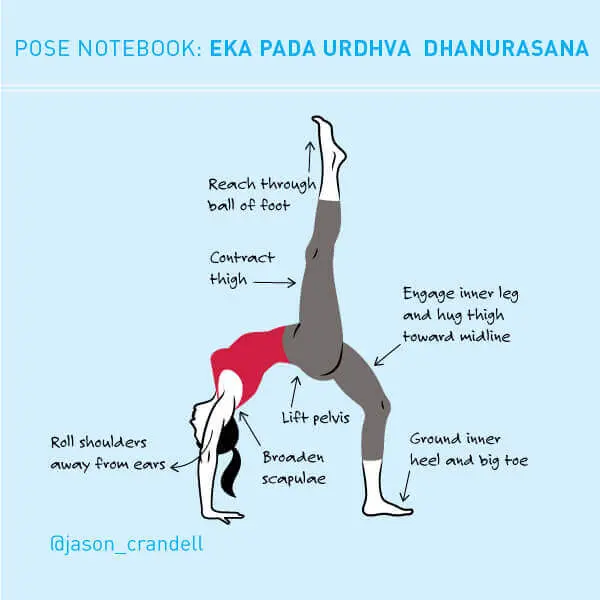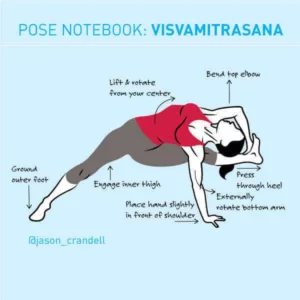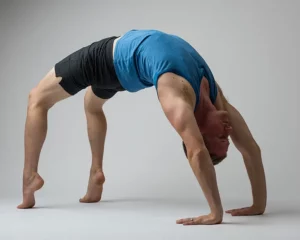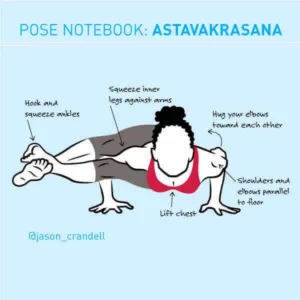I think I’m pretty good at teaching yoga. But, I also think I get lazy once in a while and I don’t expose students to the world of backward bending that exist beyond Urdhva Dhanurasana. I regularly teach a couple of prone backbends, some bridge pose variations, then conclude the backward bending series with Urdhva Dhanurasana. That’s it. Time and time again. So, I’ve turned over a new leaf. We’re going beyond Urdhva Dhanurasana in all of my experienced-level classes. And, the first pose to tackle in this progression is Eka Pada Urdhva Dhanurasana.
If you have a reasonable degree of proficiency in Urdhva Dhanurasana, you can start working on lifting one of your legs for Eka Pada Urdhva Dhanurasana. It’s literally one step away.
But, this step introduces a ton of instability into the posture, so there a few things I like to do in order to make the posture accessible—and less likely to make your SI and lower-back feel tweaky.
How to Find Balance in an Asymmetrical Pose
First, Eka Pada Urdhva Dhanurasana is referred to as an asymmetrical backbend. There’s an essential component of alignment in asymmetrical backbends that applies to this one, too. Ready? It’s essential that only part of your body that is asymmetrical are your legs.
You do NOT want your hips to be asymmetrical or your spine to be asymmetrical. Your top leg is flexing and your bottom leg is extending. The pelvis, however, needs to stay level and your spine needs to backbend without any twisting motion. Rotating your spine while doing a deep backbend may over stress your lower-back.
See also Essential Sequence: Yoga for Back Pain
There are a couple of ways to keep your hips level in Eka Pada Urdhva Dhanurasana. First, the leg that stays connected to the floor has to work much harder. Obvious, right? In particular, the abductors and the gluteus maximus on the standing leg need to work like mad. Without intense engagement in these muscles, your opposite hip (the side of the lifted leg) will drop slightly toward the floor. If this hip drops, the pelvis and spine will rotate. Not good. Also, be mindful that engaging your glutes and outer hip muscles may externally rotate and abduct your bottom leg. I don’t actually have a problem with this, since it’s preferable to the opposite hip collapsing. But, if you don’t like the feel of it, you can also hug your leg toward the midline by engaging your adductors.
Committing to strongly reaching your top leg toward the ceiling also helps keep the pelvis level. You can’t phone in this pose. You’ve got to reach the top leg full barrel. To do this, I like to pull my lifted knee toward my chest as strongly as I can. Then, I reach my top heel toward the ceiling. I find that flexing the top foot instead of pointing my top foot gives me more levity and height in the posture.
Tips for Eka Pada Urdhva Dhanurasana
There are two more details that help me with Eka Pada Urdhva Dhanurasana. First, I step my feet a little closer to each other before lifting my leg. Second, I place my hands wider apart than I do for Urdhva Dhanurasana by about six inches.
Think about it this way. In regular Urdhva Dhanurasana, you have a rectangular base. When you lift one foot off the ground for Eka Pada Urdhva Dhanurasana, you have a triangular base. In order to make the triangular base of Eka Pada Urdhva Dhanurasana more stable, it’s helpful to broaden the arms and center the remaining foot. This provides more stability in the posture, which allows for greater range of motion.
See also Essential Sequence: Ease Into Urdhva Dhanurasana
Give these steps a try and see how the pose feels in your body. Of course, your practice isn’t just about doing harder things like Eka Pada Urdhva Dhanurasana. It’s also about continuing to learn and grow. And, even if you can’t do this variation, practicing it a time or two will make the regular version of Urdhva Dhanurasana feel like a piece of cake.
{illustration by MCKIBILLO}



